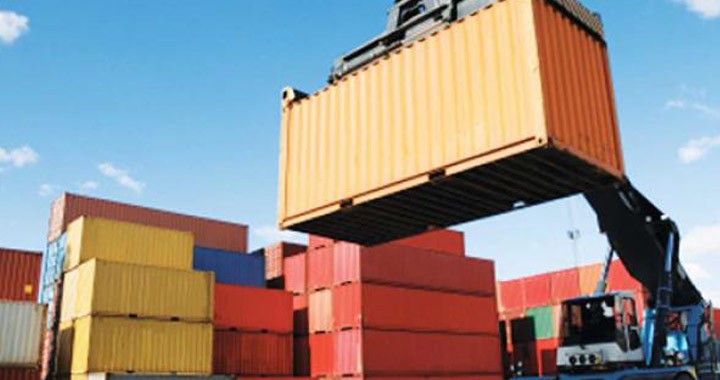 The National Economic and Development Authority’s (NEDA) plan gets a GO, pursuant to the Inter-Agency Task Force (IATF) Resolution No. 24 dated 15 April 2020 – acquiring the approval to develop a Supply Chain Analytics (SCAn) dashboard, and to conduct a Regulatory Impact Assessment (RIA).
The National Economic and Development Authority’s (NEDA) plan gets a GO, pursuant to the Inter-Agency Task Force (IATF) Resolution No. 24 dated 15 April 2020 – acquiring the approval to develop a Supply Chain Analytics (SCAn) dashboard, and to conduct a Regulatory Impact Assessment (RIA).
The main objective of the SCAn dashboard is to provide up-to-date, real-time information to the IATF on existing supply chain and logistics issues, and potential solutions to aid them in making relevant and timely actions and decisions. Information in the SCAn dashboard will be generated from different subnational stakeholders through a Networks Hub.
The Networks Hub is consisted of, but not limited to Philippine Chamber of Commerce and Industry (PCCI), Supply Chain Management Association of the Philippines (SCMAP), Philippine Exporters Confederation Inc. (PHILEXPORT), and Export Development Council’s Networking Committee on Transport and logistics (EDC-NCTL), including other government/regulatory agencies such as the Department of Trade and Industry (DTI), Department of Agriculture (DA), and Anti-Red Tape Authority (ARTA).
The RIA on the other hand, will be implemented alongside with ARTA. They will tackle COVID 19 related issuances that have implications to the flow of supply chain to ensure those that can be a burden or threat to the efficient flow of goods will be taken out.
In light of the COVID 19 pandemic that our country is facing, it is crucial to ensure the unhampered, unimpeded flow of goods to secure our supply chain, and to keep the economy going. This collaborative undertaking will be beneficial to preserving the unimpaired flow of goods, and up to the largest extent, mitigate the challenges brought by the COVID 19 to the supply chain.
This initiative is made possible in partnership with the University of the Philippines Public Administration Research and Extension Services Foundation Inc. – Regulatory Support Program for National Development (UPPAF-RESPOND), under the headship of Dr. Enrico Basilio, RESPOND Chief of Party, and EDC-NCTL Chair. – KJDA


 The Department of Transportation (DOTr) issued Department Order (DO) 2020-009 to minimize demurrage charges.
The Department of Transportation (DOTr) issued Department Order (DO) 2020-009 to minimize demurrage charges. The Department of Transportation (DOTr), under their DO 2020-007, requires domestic shipping lines to provide cargo space allocation not less than 12% of their vessel’s cargo capacity per voyage for agricultural and food products. This also enjoins all domestic shipping lines to extend a discount of not less than 40% from their published shipping rates for all cargoes on agricultural and food products covered by the DO.
The Department of Transportation (DOTr), under their DO 2020-007, requires domestic shipping lines to provide cargo space allocation not less than 12% of their vessel’s cargo capacity per voyage for agricultural and food products. This also enjoins all domestic shipping lines to extend a discount of not less than 40% from their published shipping rates for all cargoes on agricultural and food products covered by the DO. The National Economic and Development Authority (NEDA) and the University of the Philippines Public Administration Research and Extension Services Foundation Inc., Regulatory Reform Support Program for National Development (UPPAF-RESPOND) has officially turned over the Supply Chain Analytics (SCAn) Dashboard and launched the Incident Reporter Mobile Application last 21 May 2020 at the National Incident Command Center in Camp Aguinaldo.
The National Economic and Development Authority (NEDA) and the University of the Philippines Public Administration Research and Extension Services Foundation Inc., Regulatory Reform Support Program for National Development (UPPAF-RESPOND) has officially turned over the Supply Chain Analytics (SCAn) Dashboard and launched the Incident Reporter Mobile Application last 21 May 2020 at the National Incident Command Center in Camp Aguinaldo. The issues and challenges faced by the transport and logistics sector were discussed last 15 April 2020, during the 3rd eForum of #ResilenceAndRecoveryPH with the topic “Local and Global Supply Chains: Quick Assessment and Ways Forward”.
The issues and challenges faced by the transport and logistics sector were discussed last 15 April 2020, during the 3rd eForum of #ResilenceAndRecoveryPH with the topic “Local and Global Supply Chains: Quick Assessment and Ways Forward”. The National Economic and Development Authority’s (NEDA) plan gets a GO, pursuant to the Inter-Agency Task Force (IATF) Resolution No. 24 dated 15 April 2020 – acquiring the approval to develop a Supply Chain Analytics (SCAn) dashboard, and to conduct a Regulatory Impact Assessment (RIA).
The National Economic and Development Authority’s (NEDA) plan gets a GO, pursuant to the Inter-Agency Task Force (IATF) Resolution No. 24 dated 15 April 2020 – acquiring the approval to develop a Supply Chain Analytics (SCAn) dashboard, and to conduct a Regulatory Impact Assessment (RIA). In a recent pronouncement, DTI Secretary Ramon Lopez stated that the Departments of Trade and Industry, Transportation and Finance will issue the Joint Administrative Order (JAO) that will regulate local charges imposed by international shipping lines.
In a recent pronouncement, DTI Secretary Ramon Lopez stated that the Departments of Trade and Industry, Transportation and Finance will issue the Joint Administrative Order (JAO) that will regulate local charges imposed by international shipping lines. The Department of Tourism recognizes the importance of developing domestic airports in improving competitiveness and enhancing sustainable growth both in tourism and trade. It is also highlighted that the airports are not just gateways but more of economic growth drivers. This objective is included in the National Tourism Development Plan (NTDP).
The Department of Tourism recognizes the importance of developing domestic airports in improving competitiveness and enhancing sustainable growth both in tourism and trade. It is also highlighted that the airports are not just gateways but more of economic growth drivers. This objective is included in the National Tourism Development Plan (NTDP). The Philippine Ports Authority (PPA) issued Memorandum Circular (MC) No. 07-2018 that approves the 7% increase of cargo handling tariff for international containerized and non-containerized cargoes at the two international terminals in Manila. The new rate takes effect on June 5, 2018.
The Philippine Ports Authority (PPA) issued Memorandum Circular (MC) No. 07-2018 that approves the 7% increase of cargo handling tariff for international containerized and non-containerized cargoes at the two international terminals in Manila. The new rate takes effect on June 5, 2018.